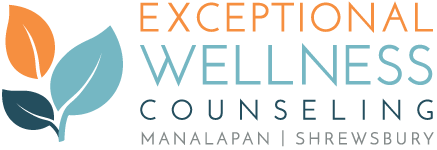Helpful Breathing Techniques to Help with Anxiety
| Written by Jane Dustman, LCSW

When anxiety comes knocking at your door, you cannot help but panic, become overwhelmed and sometimes, all your senses go out the door. Your heart rate can increase, your palms can feel sweaty, knees weak and ultimately, your breathing completely goes out of whack trying to play catch up. This feeling is definitely not pleasant, but unfortunately it happens.
One of the main complaints during an anxiety attack/panic attack is someone reporting that they cannot catch their breath or it feels like they cannot breathe. Again, as overwhelming as this may be, no need to fear, breathing techniques are here.
Simple breathing techniques can help calm you down, catch your breath, breathe at ease and ultimately, self-soothe your body from inside out.
Below, you will find education on why breathing techniques are so important for anxiety, as well as helpful breathing techniques that you can use in case anxiety gets the best of you.
Benefits of Breathing Techniques
One may wonder how breathing techniques differ from the regular breathing we do on a daily basis, but there is a key difference. According to the American Lung Association, “breathing exercises can help rid the lungs of accumulated stale air, increase oxygen levels and get the diaphragm to return to its job of helping you breathe.”
When anxiety kicks in, shortness of breath occurs which ultimately can increase your heart rate. Sometimes, you may even heave, in the sense your neck, back, and shoulders get involved, causing you to exert a lot of energy and making your body become tense. When anxiety rises, your central nervous system kicks in, promoting your fight or flight response, which in turn can cause uncomfortable physical symptoms, including shortness of breath.
If and when breathing techniques are implemented, your heart rate slows and your parasympathetic nervous system kicks in, producing a calm feeling throughout your mind and body. No matter how hard it may seem, remember to take it easy, focus in, and breathe.
4-7-8 Breathing
One of the most beneficial types of breathing techniques out there is the 4-7-8 breathing technique. 4-7-8 breathing technique focuses on diaphragmatic breathing, where your diaphragm contracts, allowing you to fill your diaphragm up, then expelling it, allowing your body to naturally promote relaxation. While this technique is good for self-soothing and easing anxiety, it also helps promote natural sleep and the ability to fall asleep earlier.
Follow these three simple steps to get started.
- Place one hand on your chest and one hand on your stomach
- Inhale through your nose for four seconds, filling your diaphragm up like you ate a huge turkey dinner.
- Hold your breath for seven seconds
- Exhale slowly out through your mouth for eight seconds, expelling all the air from your diaphragm and having it return to your natural resting state
- Repeat the process as many times as you feel helpful
Hand Tracing Breathing

This one may sound different, but hand tracing breathing exists for all you tactile lovers out there. This type of breathing not only helps calm down your central nervous system, but it is utilizing your senses through the process, keeping you grounded in the moment. This is a breathing technique you can do anywhere, which makes it super easy to help regulate your breath.
- Starting with your pointer finger, place your finger on the top of your wrist, bottom of the right side of your left palm.
- With ease, trace your pointer finger up the longside of your hand, tracing up to the pinky finger, breathing in through your nose.
- When you get to the top of your finger, hold your breath for about three seconds.
- As you start to trace down your finger, breathe out slowly through your mouth.
- Continue as follows- breathing in while tracing up your finger, hold at the top and exhale slowly through your mouth as you trace down your finger. Keep doing this until all fingers have been traced and repeat as needed.
Alternate Nostril Breathing
As many of you may know, yoga uses breath work to help deepen practice and remain in the moment. One type of yogic breath, that helps with anxiety management and calming down the central nervous system, is Alternate Nostril Breathing.
Similar to the hand tracing breathing, this practice allows you to use a sense, specifically touch, to help remain in the moment and self-soothe. Alternate Nostril Breathing is known to help reduce heart rate if accelerated, improve lung and cardiovascular function, lower stress, and ultimately help overall wellbeing.
- Take your pointer finger and middle finger and place them between your eyebrows
- Your ring finger will be used to plug your left side of your nose, while your thumb will plug your right side of your nose
- Start by plugging your left nostril with your ring finger, and breathe in through your right nostril for four seconds long
- After inhaling, hold for four seconds
- Before exhaling, plug your right nostril with your thumb, free your left nostril and breathe out of your left nostril, exhaling for four seconds
- Hold again for another four seconds
- Repeat the process, however, the nostril you last exhaled with before holding, you will breathe in through that nostril and end exhaling on the opposite nostril.

Box Breathing or Square Breathing
Rhythmic breathing is another great form of breath work that does help promote the parasympathetic nervous system, allowing the body to naturally relax and regulate breathing. This type of breathing can be done using visualization techniques, or as simple as tracing the outline of a square. This breathing technique can also be done anywhere, which makes it versatile and can come in handy if needed.
- With your pointer finger, or if you can visualize this in your mind, trace a line up, inhaling through your nose for four seconds
- Trace or visualize a line going across, holding your breath for four seconds
- Visualize or trace a line going down for four seconds, exhaling slowly out through your mouth
- Lastly, close the square up either with your mind or finger, tracing the line inwards towards the initial line you made, holding your breath for four seconds
- Repeat the process, tracing/visualizing a square while inhaling, holding, exhaling, holding, all for four seconds
Lion’s Breath

Another type of breathing style that helps to relax the central nervous system, lower blood pressure, improve sleep, mitigate anxiety, and help with mindfulness, is Lion’s Breath. Lion’s Breathing is another yogic breathing, through the Sanskrit that helps relieve and unease tension in your face and your chest.
- Inhale a big deep breath through your nose and at the same time, open your eyes wide
- While doing this, open your mouth wide and stick out your tongue, having the tip of your tongue point down towards your chin
- In order to exhale out through your mouth, contract the muscles in your throat, making a “HAA” sound
- Repeat this process 2-3 times
If you or someone you know are struggling with anxiety and want to help promote the parasympathetic nervous system response of relaxation, being mindful in the moment and coping with ease, please do not hesitate to outreach for help.
Licensed professionals can help you talk through your feelings, work on anxiety management skill sets and find techniques to help regulate and explore your emotions, all wall talking through anxiety/mental health symptoms.
Jane Dustman is a LCSW who enjoys spending her free time with family and friends, hanging on the beach, practicing yoga and dancing. Jane is dedicated to her practice of social work and enjoys being a full-time therapist at Exceptional Wellness Counseling.
EWC has locations in Manalapan and Shrewsbury, NJ, and accepts a variety of insurances.
Check out Jane’s professional bio here.
Email Us: info@exceptionalwellnesscounseling.com
Call Now: (908) 415-2042
NEXT STEPS & RESOURCES
-
- Are you ready to take your first step? Reach out to us.
- Do you feel you maybenefit from counseling during this time? Take the first step.
- Interested in online counseling? Learn more.
- Interested in group counseling? Learn More

